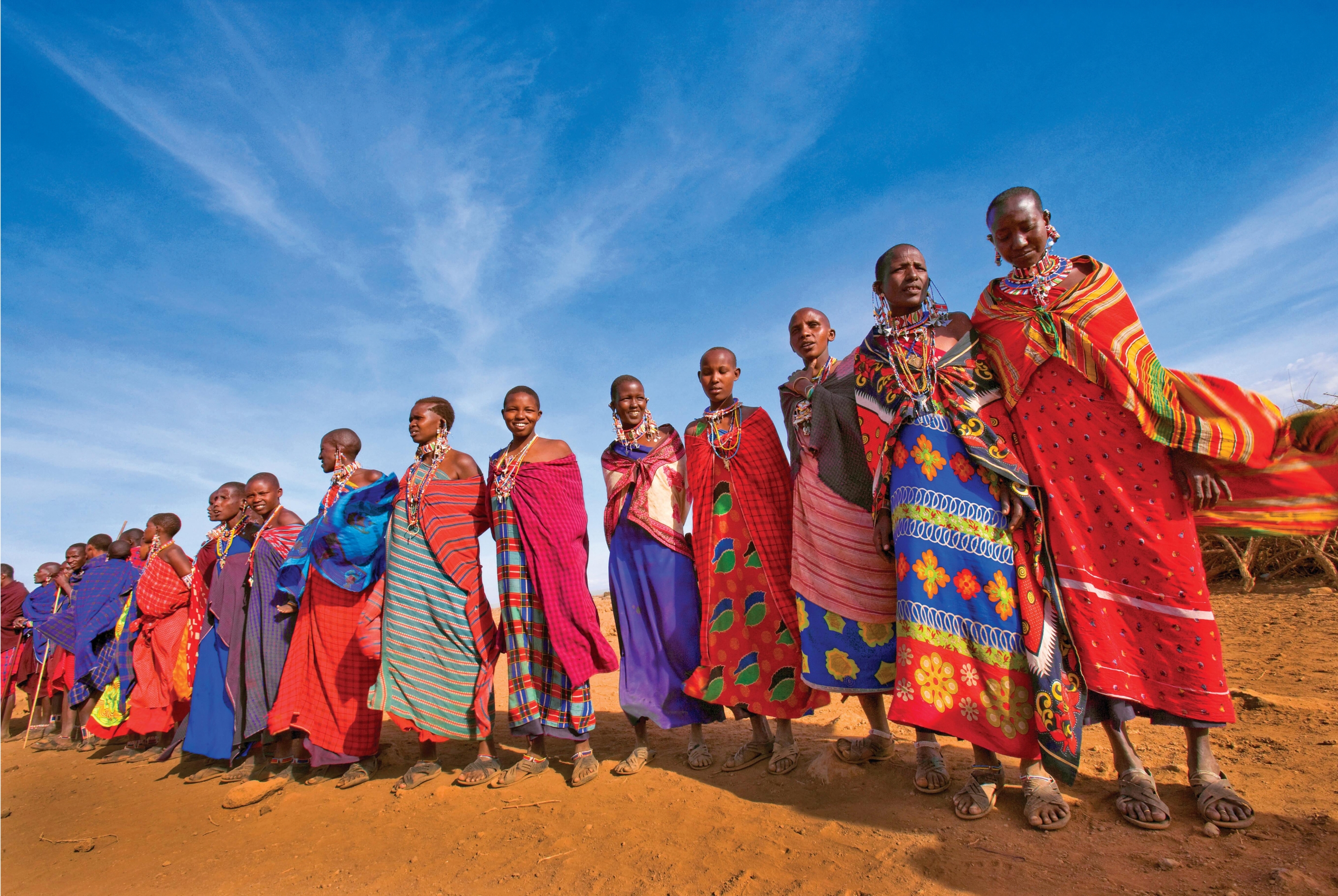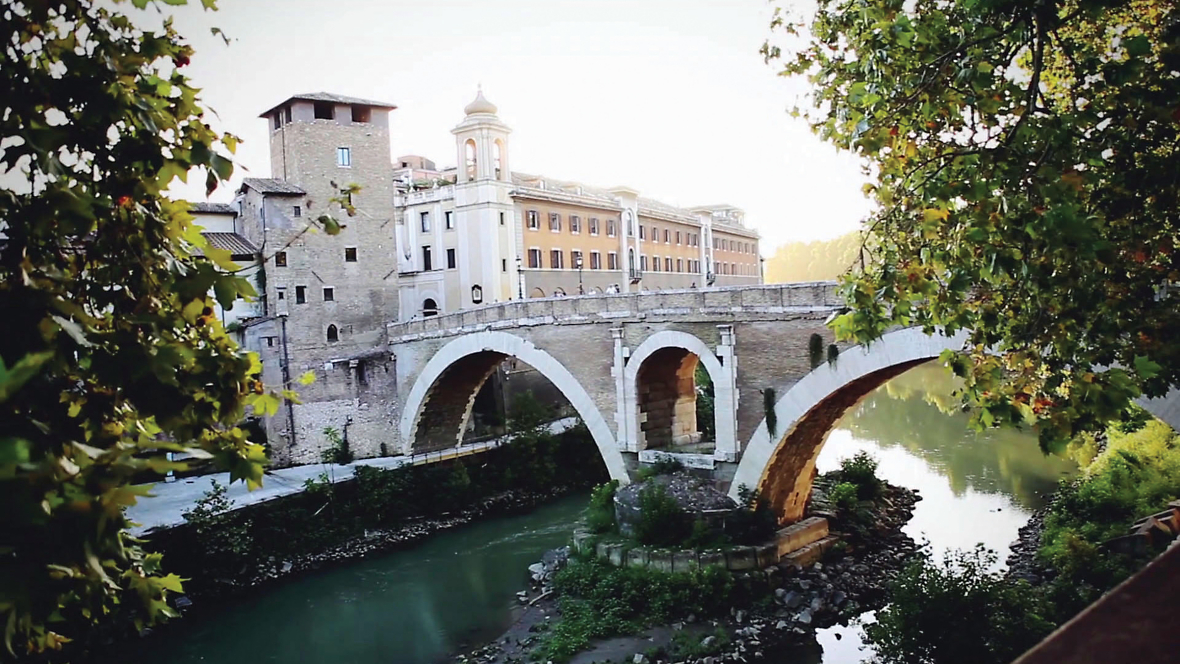You’re receiving this message because your web browser
is no longer supported
We recommend upgrading your browser—simply click the button below and follow the instructions that will appear. Updating will allow you to accept Terms and Conditions, make online payments, read our itineraries, and view Dates and Prices.
To get the best experience on our website, please consider using:
- Chrome
- Microsoft Edge
- Firefox
- Safari (for Mac or iPad Devices)
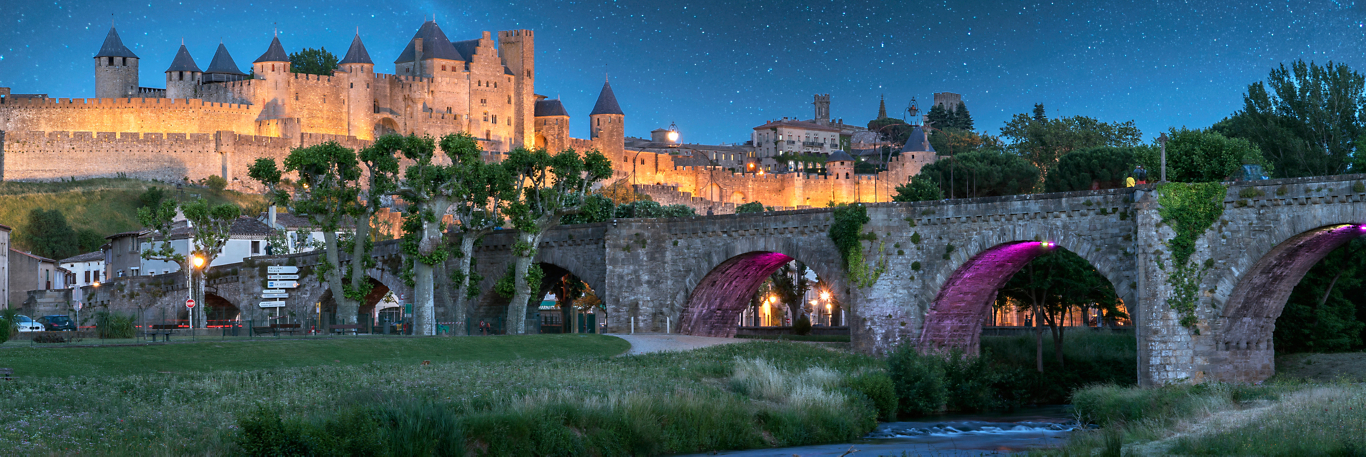
france
Known for its high-end fashion, influential culinary culture, and world-class art and architecture, it's no wonder France is one of Europe's most visited countries each year. France affords a variety of experiences—from perusing museums in Paris, to strolling along the palm-tree-lined promenades of the Riviera, to driving through countryside straight out of an Impressionist painting. There's no question that France has a flair for the finer things. (This is, after all, the land that birthed cultural icons like Claude Monet, Edith Piaf, and Coco Chanel.) Bold wine, lyrical chanson music, delicate crepes, lace-curtained cafés—these luxuries are the epitome of French art de vivre (art of living).
For all its chic sophistication, however, France is not without conflict: On July 14, 1789, bloody Bastille Day toppled a monarchy and launched a ten-year revolution that reverberated around the world. From 1804 to 1815, scheming Napoleon Bonaparte went toe to toe with the rest of Europe as he built his empire. And in 1940, the Nazis absorbed France into their axis, dooming hundreds of thousands of civilians and soldiers. But through it all, France has endured, even thrived—reveling in the prosperity of the Belle Époque and helping to found NATO. In many ways, this interminable grace under pressure adds to the country’s allure. Because at the end of the day, France will always be romantically, stylishly, undeniably French.
Compare Our Adventures
Click 'Select to Compare' to see a side-by-side comparison of up to adventures below—including
activity level, pricing, traveler excellence rating, trip highlights, and more

Spend 16 days in France on
French Impressions: From the Loire Valley to Lyon & Paris
O.A.T. Adventure by Land

Spend 6 days in France on
French & Italian Rivieras: Avignon, Corsica, Elba & Rome
O.A.T. Adventure by Small Ship

Spend 4 days in France on
New! Cruising Northern Europe: From Normandy's Beaches to the Shores of Scandinavia
O.A.T. Adventure by Small Ship
Spend 5 days in France on our
Pre-trip Extension
Carcassonne, Bayonne & French Basque Country
Carcassonne, Bayonne & French Basque Country
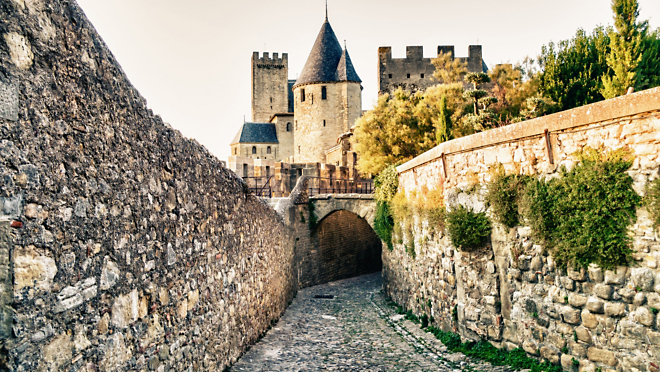
Compare Adventures
Add Adventure
including international airfare
per day
*You must reserve the main trip to participate on this extension.
**This information is not currently available for this trip. Please check back soon.
You may compare up to Adventures at a time.
Would you like to compare your current selected trips?
Yes, View Adventure ComparisonFrance: Month-By-Month
There are pros and cons to visiting a destination during any time of the year. Find out what you can expect during your ideal travel time, from weather and climate, to holidays, festivals, and more.
France in January-February
Lighter crowds during the winter months make is easy to linger a little longer at your favorite attraction, or enjoy a rich and warming cup of Chocolat Chaud at a café in the City of Lights. It can be rainy and wet this time of year, but the temperature hovers near the 50⁰F mark, making it easy to wear layers and adjust as you travel. While snow is a rare occurrence along the palm-lined Riviera, winter activities are within reach; the mountains are not far and French skiing is some of the greatest in the world.
Holidays & Events
- February 14: St. Valentin Festival
- February-March: Carnival de Nice
Must See
One of the oldest carnivals in the world, the annual Carnival de Nice is one of the biggest winter events on the Riviera. The city of Nice erupts with an extravaganza of parades, floats, and jubilation. The streets are bustling with food stalls and events, plus the world-famous Bataille de Fleurs showers crowds of revelers with colorful flowers.
Spend Valentine’s Day in the charming village of Saint Valentine, France. For the weekend near February 14, this quaint hamlet experiences a high volume of visitors, the town is peppered with flowers and besieged with sweethearts looking to get married in the garden gazebo, or honor their silver, gold or diamond anniversaries. Pin your love notes on the Tree of Vows, get letters stamped from the St. Valentin post office, witness confection and chocolate makers in action, or visit the local market for a treat.
Watch this film to discover more about France
France in March-April
As the locals bid adieu to the cold winter months and the countryside begins to awaken, spring is the best time to visit this enchanting region. Tourists have not yet descended and with local markets opening for the season and the hillside starting to bloom, you’ll have easy access to true local highlights. The increasing sunshine makes it a great time to hike the Pyrenees and you can benefit from longer days and mild temperatures for outdoor activities.
Holidays & Events
- March/April: Easter
Must See
Easter is celebrated with ornately crafted white and dark chocolate displays in candy shops and bakeries across the country. Exquisite works of art, these chocolate eggs, rabbits, and even bells make their way into windows of the confiseries throughout the region, while church bells ring out, filling the air with their chime on Easter morning.
Watch this film to discover more about France
France in May-June
The azure waters of the Riviera are just heating up and the sun is gaining strength: summer kicks off on the Riviera in June. The locals aren’t on holiday yet, making this the ideal time to take advantage of the lighter crowds and optimal weather for seeing highlights or enjoying the coast at your leisure. There are many celebrations and holidays to witness this time of year, as the countryside is alive and flourishing.
Holidays & Events
- May 1: May Day; also known as Labor Day
- May 8: Victory in Europe Day
- Held Annually in May: Cannes Film Festival
Must See
Every two years, the city synonymous with wine hosts a festival at the end of June. This four-day celebration includes street art, various food and wine pairings, music, and fireworks. The Bordeaux Wine Festival is a celebration of wine, food, and culture.
Characterized by their geometric layout, the French-style gardens exemplify beauty and affluence, while the château of the Loire Valley each tell a story, steeped in opulence and masonry. Visit the Valley of the Kings to witness the verdant green tradition of these castles and their gardens.
Commemorating the D-Day landing, the French host various memorial ceremonies for the anniversary of the Allied Landings on June 6. Parades, reenactments, and remembrances mark the day.
Watch this film to discover more about France
France in July-August
Tourism is in full swing and with the temperatures at their warmest, summer is at its peak too. The lavender fields in Provence are in their full glory; as are the outdoor markets. Some establishments may close in August, as this is the time many locals take vacation—especially in Paris. The South of France swells with locals streaming to it for holiday.
Holidays & Events
- July 14th: Bastille Day; the french celebrate the storming of the Bastille—a turning point of the French Revolution—with parades, outdoor celebrations and fireworks.
- Month of July: Tour de France finishes
Watch this film to discover more about France
France in September-October
September may officially signal summer’s end in the northern hemisphere, but in France, fair weather tends to linger through mid-October. Visitors can still enjoy relatively warm daytime temperatures of between 60° to 70° Fahrenheit and longer store hours—but without the crowds that summertime typically draws. While rain can be more common as the seasons change, sunshine is still plentiful in autumn, and the crisp blue skies provide a lovely contrast to the fiery leaves that appear as fall progresses.
Holidays & Events
- First Sunday in October: Nuit Blanche (White Night) festival; Parisians party from dusk until dawn during this free all-night celebration of art, music, and theater.
- Late September: Fashion Week; for one week perennially posh Paris becomes even more stylish when world-renowned clothing designers descend on the French capital to debut their collections for the upcoming spring/summer season. This bi-annual event is the last of the so-called “Big 4” fashion weeks to take place in the U.S. and Europe each year.
Must See
For French wine enthusiasts, Christmas comes in early September, when the grape harvest typically begins. From Bordeaux to Alsace, vineyards are flooded with grape pickers, and the streets teem with tractors transporting the fresh crop to the presses. While many châteaux close to visitors during this busy season, spirits are high, festivals abound, and the air is rich with the scent of grapes.
Watch this film to discover more about France
France in November-December
Cold weather begins to creep into France in November, days grow shorter, and rain and snow are common. As locals head indoors to escape the chill, many small-town shops and restaurants opt for shorter hours, or close for the season entirely. On the plus side, tourists rarely flock to France in the winter months, making it an ideal time to visit the country’s more famous sites, which may be crowded during other seasons. Ski resorts open in the Alps and Pyrenees—a welcome change for winter sports enthusiasts. What’s more, the dimmer days and falling snow create a beautiful backdrop for the festive decorations and glimmering lights that spring up during the holiday season.
Holidays & Events
- November 11: Armistice Day
- December 25: Christmas
Must See
Christmas in France is a decidedly elegant affair, and the merriment lasts for weeks leading up to the main event. The City of Lights shines even brighter during the holidays, when trees are festooned in lights and shimmering Christmas carousels pop up in nearly every neighborhood. And in the east, near neighboring Germany, stylish Christmas markets abound, full of artisan food and traditional toys. No matter where you are in France, you’re sure to find a dazzling array of holiday pastries, including the most famous: decadent bûches de Noël (yule log), a rolled chocolate sponge cake filled with cream, frosted in buttercream, and adorned with sugar holly and meringue mushrooms.
Watch this film to discover more about France
Average Monthly Temperatures
High Temp Low Temp
France Interactive Map
Click on map markers below to view information about top France experiences
Click here to zoom in and out of this map
*Destinations shown on this map are approximations of exact locations
The French Riviera
Soak up the sun and spot the stars in the French Riviera. Strung along 71 miles of azure coastline, this is the glamour capital of France, where grand hotels line fashionable seaside promenades, mega-yachts dock next to fishermen unloading the day’s catch, and the gently lapping waters of the Mediterranean sparkle invitingly.
For a chance to walk the red carpet, visit Cannes. This formerly sleepy fishing village transforms into a playground for the ultra-rich each year during the Cannes Film Festival. Take in a film, amble along La Croisette—Cannes’s glitzy promenade—and keep a lookout for celebrity sightings.
As the French Riviera’s largest city and unofficial capital, Nice is sure to delight with its world-class art museums, stellar dining, and old-world decadence. Explore the lively markets or wander through the narrow alleys and cobblestone lanes of the historic Old Town, perhaps stopping for a warm bowl of bouillabaisse, the region’s famous fish stew, along the way.
Explore the French Riviera with O.A.T. on:
Corsica
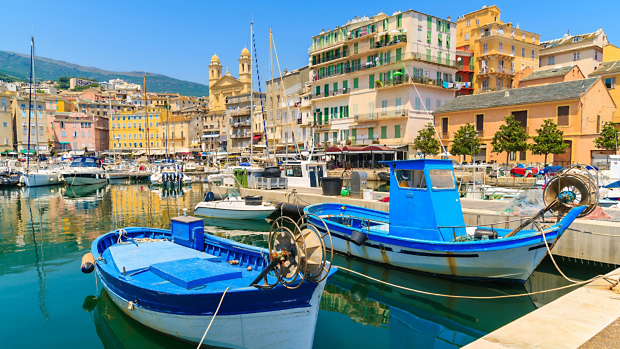
Situated between France and Italy, Corsica has long been the center of a geopolitical tug of war. From 1284 until 1755, the island was ruled by the Republic of Genoa. Then, after 14 years of independence, it was conquered by the French, who briefly lost control to the British—twice—during the French Revolution and following the Napoleonic Wars. Just over a century later, Corsica traded hands again, becoming a Nazi territory when France was conquered, and later, an American military outpost (nicknamed "USS Corsica") at the height of World War II. In the late 20th century, following decades of perceived neglect and poor treatment, and spurred by a fierce sense of nationalism, Corsicans began to push back against the French government.
Over time, the island has been granted some measure of autonomy: Officially, it is a territorial collectivity of France with some governing authority. But in spite of this push for self-reliance, Corsica is French nevertheless. Even the local language, Corsican, is slowly dying—only ten percent of the population speaks it fluently today. And then, of course, there is Corsica's native son: Napoleon Bonaparte. Though no one would dispute his allegiance to France, Corsicans take immense pride in their local hero. From museums to eponymous airports, le petit caporal (affectionately, "the little corporal") is omnipresent on the island. There is even a statue in his likeness in Bastia, Corsica's primary port. From his pedestal in Saint Nicholas Square, he keeps a close eye on the comings and goings in this bustling city, surveying visitors as they weave in and out of the pastel-hued Old Port and marvel at the mighty Terra Nova citadel guarding the cove nearby.
Explore Corsica with O.A.T. on:
Carcassonne
Carcassonne sits high on a hilltop in the sun-drenched region of Languedoc. The city’s famed citadel—the Cité de Carcassonne—is a UNESCO World Heritage Site and the stuff of fairytales: Stalwart turrets, double-lined ramparts, and a drawbridge conjure images of dueling medieval knights and courtly romance. It was featured in the film Robin Hood: Prince of Thieves, and is even rumored to be the inspiration for Walt Disney’s Sleeping Beauty.
Just beyond the fortress walls, another local icon awaits: the Pont Vieux, the oldest of the city’s seven bridges and indeed one of the oldest remaining medieval bridges in all of France. A stroll across this stone walkway is like a trip through time. On the other side lies Ville Basse, Carcassonne’s so-called “new” town, which features modern boutiques, outdoor cafés, and restaurants serving up savory cassoulet, the traditional casserole of pork and white beans that originated in Carcassonne.
Explore Carcassonne with O.A.T. on:
Bayonne

Set on the confluence of two rivers, the Adour and Nive, Bayonne has often been called one of the prettiest cities in southern France. Perfect for exploring by foot, Bayonne beckons with its charming half-timbered houses, meandering cobblestone streets, and bevy of lovely bridges—five total—that span the two rivers. Locals and visitors alike enjoy walking through the Old Town, popping into the many shops and cafes, and soaking up Bayonne’s rarified atmosphere.
Bayonne is also the capital of Basque Country and, as such, can feel a bit less like France and more like Spain. Locals are fiercely proud of their Basque heritage—which is why you will find the shutters of Bayonne’s townhouses painted in the Basque colors of red and green. You can also see examples of this heritage in the language—still widely spoken throughout Bayonne—and the cuisine. Fresh fish, tapas, and air-dried ham are a few of the traditionally Spanish specialties of this city. The ham in particular is so renowned, that it bears the city’s name: jambon de Bayonne. After a day of winding through Bayonne’s narrow alleys and cobbled walkways, stop into one of Bayonne’s riverside cafes and taste it for yourself.
Explore Bayonne with O.A.T. on:
Lyon

Lyon is known as France's culinary capital—so it is only fitting to explore the city through your stomach. Stroll through the covered stalls of the Les Halles market or cozy up at a table at a local bouchon (the homey, family-owned restaurants that can be found only in Lyon), and tuck into the city's famous specialties: Saint Marcellin and Saint-Félicien, two popular types of soft cow's milk cheeses; quenelle, a creamed fish dish; many varieties and preparations of saucisson (sausage); and soupe à l'oignon Lyonnaise, which is known internationally as "French onion soup" but was, in fact, first created in Lyon.
The city also has the good fortune of being surrounded by some of France's best wine-growing regions. Pair your nibbles with a glass of wine from the nearby Beaujolais or Côtes du Rhône regions for a culinary match made in heaven.
France's second city stretches across two rivers—the Rhône and the Saône; strolling across the many elegant bridges that connect the city's banks is a great way to see the sights (and walk off the rich food). Or, visit the newly-opened Musée des Confluences, which is nestled at the very spot where the two rivers converge. The museum's futuristic exterior is a worthy attraction on its own, but the exhibits it houses—thematically organized around the Earth, eternity, societies, and species—are fantastically thought-provoking.
Explore Lyon with O.A.T. on:
Normandy Beaches

It is hard to imagine that these now-tranquil shores were once the site of the largest amphibious military invasion in history, but it was here on June 6, 1944, where nearly 7,000 boats hit the beaches along a 50-mile stretch of the coast of Normandy to put the final nail in the coffin of the Nazi occupation of western Europe. Those vessels carried soldiers from the United States, Great Britain, Canada, and many other Allied nations, all of whom arrived determined to carry out the order of the commander of the operation, General Dwight D. Eisenhower: “Full victory—nothing else.”
In all, roughly 156,000 Allied troops landed at five beaches of Normandy that morning, pushing the Germans back from their fortifications to link up with airborne soldiers who had parachuted in the night before. By the end of the day, 10,000 Allied soldiers lay dead, wounded or missing, but the job was done; the Allies established their hard-won foothold in northern France that would eventually see Europe freed from the grip of Nazi terror.
Travelers today can walk amongst the sands where these bloody first steps were taken, and observe the remains of the German fortifications that still dot the shore. The quiet setting, and the memorials dedicated to the men who sacrificed everything here create an ideal atmosphere to contemplate the heroism of what Tom Brokaw dubbed “The Greatest Generation.”
Explore the Normandy Beaches with O.A.T. on:
Chateau de Villandry

Inhabited since the Renaissance, the 16th-century Chateau de Villandry, is the last great chateaux of the Loire Valley. This grand estate has been home to notable figures such as Jean Le Breton, minister of Francis I; the Marquis de Castellane, ambassador of Louis XV; and Jerome Bonaparte, brother of Napoleon I. Originally a medieval castle, Breton demolished most of the original construction to make way for his new Renaissance-style estate. Today, only the castle keep remains standing, where a defeated English King Henry II offered his surrender to France’s King Philip II, ending a bloody war of succession.
The star attraction of the Chateau is its immaculately-tended garden, a colorful 22-acre sprawl of flora added to the estate in the early 20th century by the Spanish doctor Joachim Carvallo. The manicured lawns contain a water garden, ornamental flower gardens, and vegetable gardens, organized in formal patterns and lined with low box hedges, and have been open to the public since 1920.
Explore Chateau de Villandry with O.A.T. on:
Featured Reading
Immerse yourself in France with this selection of articles, recipes, and more
ARTICLE
ARTICLE
Bring the sweet taste of France into your kitchen by creating this traditional French apple pie.
ARTICLE
Discover France’s medieval city on a hill and learn about its famous fortifications.
From the valley to the vineyards

The bays, rivers, and estuaries of France
by Bradley Keist
From the Loire Valley to the Atlantic coast, the southwest of France is a region of timeless beauty: a mosaic of tranquil waterways, bucolic panoramas, medieval villages, and majestic châteaux. And, spread out amidst it all—draped over the landscape’s gently-rolling hills—are acres upon acres of ambrosial vineyards. And yet, while the region is renowned for its top-of-the-line vintages, the southwest of France offers so much more … so much to see, so much to do … and so much to taste.
Vauban’s Lock
Looming over the banks of the Gironde Estuary are the fortified stone walls of the Citadelle de Blaye. In 1685, Louis XIV appointed famed military engineer Sébastien Le Prestre de Vauban to upgrade the citadel’s aged and outdated fortifications as a means to protecting the larger city of Bordeaux—30 miles upstream from Blaye—against invading English and Spanish fleets. At the time, cannon fire could not reach from one bank of the estuary to the other. As a result, Vauban designed and built two additional forts—Fort Médoc on the facing bank and Fort Pâté atop a small isle in the middle of the Garonne.
Monks and monoliths
The limestone buildings and cobbled streets of Saint Emilion blend harmoniously with a sea of rolling vineyards that spill down the rocky precipice upon which the town was built. Just a few miles to the south, the Dordogne River winds lazily through the hills, breathing life into the plump, aromatic grapes that dapple the greenery. But it wasn’t always so. Nearly 1,300 years ago, a young monk went on a pilgrimage.
Captivated by the beauty of the region—a union of beryl-colored foliage and rocky outcroppings of ochre and ecru—he settled in a cave and lived out the remainder of his life as a hermit. After his death in 767, the monk was dubbed a saint, thus lending his name to the town that would follow. A century later, men began extracting limestone blocks from the earth to build their town. Construction of Saint Emilion’s eponymous monolithic cathedral also began at this time. While the church’s exterior may seem less-than-impressive, the cavernous interior—carved deep into the belly of the rocky earth—is an awe-inspiring collection of tunnels and grottos.
The Bounty of Aquitaine
The southwest of France is known for more than just wine. The Arcachon Bay in Aquitaine is blanketed with moss-covered rope sacks stuffed with oysters.
Since Roman occupation over 2,000 years ago, oysters have played a pivotal role in this region of France. But it wasn’t until the 19th century that the first “oyster park” was established—by none other than Napoleon III, in an effort to prevent the local oyster species from being wiped out.
From its history to its cuisine, there is plenty to raise a glass to during a visit to this rarefied region of France.
Tarte Tatin (French apple pie)
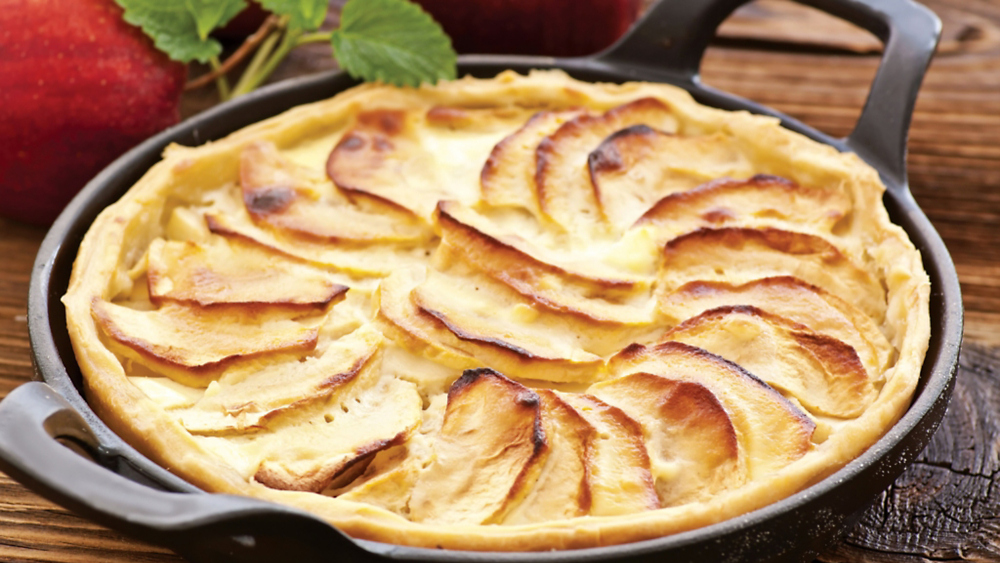
by Amanda Morrison from Currents
For the uninitiated, a French meal is often comprised of three acts: an hors d’oeuvre (introductory course), the plat principal (main course), followed by dessert. The meal may begin with an aperitif, like the licorice-flavored, local spirit of Pastis, as a vehicle to “open the appetite.” And it may end with a digestif—like a Cognac, or another kind of brandy—to help with digestion.
And what routinely baffles outsiders is how the French can use such rich ingredients—take the classic mother sauces, like Hollandaise, made with egg yolk and clarified butter, or Béchamel, whole milk thickened with flour—and yet, the population is a model of cardiac health. According to the World Health Organization, France’s heart disease mortality rates are the second lowest worldwide; their obesity rate hovers just over 9%, while we battle with ratings over 30% in the United States.
This has led to the phrase, “the French paradox,” a topic of hot debate. In Michael Pollan’s In Defense of Food, he argues that their health is linked to their consumption of natural provisions versus heavily processed foodstuffs. Meanwhile, The Fat Fallacy of Will Clower cites smaller portions, less snacking, less sugar-packed fare, and overall, less junk food available as the underlying “X factor.” And then there was that episode of 60 Minutes spotlighting resveratrol—found in red wine, which the French drink liberally—and studies that linked it with longevity and a lower risk of cardiac arrest. (Consequently, red wine began to fly off the shelves.)
Whatever the explanation is, this much is clear: French cuisine is in a class all its own. And with this recipe courtesy of Marian Pikna, Chef de Cuisine of the M/S Bizet, we invite you to bring a taste of France into your kitchen. And don’t be intimidated: As Julia Child once wrote in Mastering the Art of French Cooking, “No one is born a great cook, one learns by doing.”
Ingredients
6-8 Granny Smith apples (peeled and sliced)
½ package thawed puff pastry
6 Tbsp sugar
2 Tbsp lemon juice
¼ cup butter
Vanilla ice cream
Mint leaves
Preparation
- Preheat the oven to 400°F. Toss the sliced apples with the lemon juice and a sprinkling of the sugar, then set aside.
- In a medium-sized skillet, melt the butter over medium heat. Add the remaining sugar and stir until the sugar dissolves. Turn the heat on low, and carefully place the apple slices into the skillet. Turn the heat back up to medium and cook the apples until a thick caramel has formed (should take 20-25 minutes). Turn the heat off and set the skillet aside.
- Roll out the pastry dough into an 11-inch circle. Lay the pastry around a rolling pin and place it over the cooked apples to cover them completely. Tuck the edges of the pastry down inside the skillet and then prick the pastry lid all over with a fork.
- Bake for 20-30 minutes or until golden brown and crisp. Remove from the oven and allow to cool for 5 minutes. Loosen the pastry edges and turn out the tart, upside down, so that the pastry becomes the base, under the apples.
- Serve warm or at room temperature with vanilla ice cream, and garnish with a mint leaf.
Serves: 8
Then & Now: Carcassonne

The medieval walled city of Carcassonne may look like a fairy tale castle, but trace its long history and you’ll find it was actually designed to be an imposing—and infamous—fortress.
This lofty city on a hill was first fortified in the third century by the Romans. If anyone from ancient history knew how to build an impenetrable fort, it was the Roman Empire. Constructed to withstand any attack, Carcassonne became a desirable conquest and was held by a number of invaders throughout its 2,500-year history—including the Visigoths, Saracens, and Crusaders. Over time, the citadel grew to include walls nearly two miles long and 52 massive cylindrical towers. Most of these towers were crowned with conical roofs of gleaming slate—save for a few topped with terracotta, identifying them as original Roman structures.
By the mid-13th century, Carcassonne had become part of the Kingdom of France, and almost immediately was put to sinister use. Under the red-tiled Roman roofs, the Medieval Inquisition movement imprisoned—and tortured—members of the Cathar and Waldensian faiths, religions denounced by the Catholic church at the time. Then a century later, during the Hundred Years’ War, Carcassonne regained its notoriety as a defensive masterpiece, holding the pillaging armies of England’s “Black Prince” Edward at bay.
The citadel’s fame as a strategic site was not to last. In the mid-nineteenth century, under Napoleon’s Restoration, Carcassonne was removed from the list of official fortifications and fell into disrepair. It was even slated to be demolished in 1849, if not for the outcry of local citizens. A successful campaign to save the city on a hill was waged by Carcassonne’s mayor, Jean-Pierre Cros-Mayrevieille, and writer Prosper Mérimée. Instead of being destroyed, the city was beautifully restored—helmed by French architect Eugène Viollet-le-Duc.
Carcassonne’s days as a frightening fortress may have come to a close, but a new chapter was about to begin.

Today, Carcassonne has become one of France’s most-visited destinations—and competes with Mont St. Michel as the country’s most renowned monument. After being added to UNESCO’s list of World Heritage Sites in 1997, the citadel’s allure continued to grow—beckoning travelers from all across the globe to marvel at the perfectly preserved medieval city. Carcassonne has become so well-known, in fact, that it served as inspiration for a popular board game of the same name.
In May of 2018, as the walled city celebrated its twentieth anniversary of being named a UNESCO site, its famous fortifications were given an unusual update. To commemorate the occasion, the National Centre for National Monuments asked Swiss artist Felice Varini to create a visual tribute. He obliged with eye-poppingly yellow concentric circles crafted of aluminum, attached to the castle’s walls in a dizzying design. As it turned out, not everyone was a fan of this modern addition to Carcassonne’s medieval appeal. Fortunately, the installation was only temporary and did not seem to deter visitors.
One thing most visitors are surprised to discover, however, is that Carcassonne is not simply a tourist attraction. Inside its walls live approximately 50 permanent residents. Though the population is small—owing to the city’s lack of modern amenities such as a bank and post office—the people of Carcassonne who choose to remain are not only treated to spectacular views of a storybook city come to life, but have become a part of the citadel’s long and fascinating history.
Come experience the medieval splendor of Carcassonne for yourself when you join us on French Impressions: From the Loire Valley to Lyon & Paris.
Traveler Photos & Videos
View photos and videos submitted by fellow travelers from our France adventures. Share your own travel photos »
